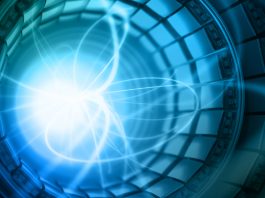Carefully positioned wire coils have been found to improve photodetector efficiency by counteracting Earth’s magnetic field.
A new study led by the University of Oviedo has shown that specific arrangements of current-carrying wire coils around large cylindrical detectors can compensate for natural magnetic disturbances.
The paper, ‘Magnetic shielding simulation for particle detection,’ is published in the journal EPJ P.
Why do some particle detectors require improvements?
Particle physicists rely on sophisticated instruments to detect bursts of light that are emitted when incident particles interact with a medium.
The most common instrument used in particle detection is the Cherenkov detector. This system uses photomultiplier tubes to capture as much of this light as possible, providing a signal to reveal where the particle came from.
However, the efficiency of these detectors drops when subjected to Earth’s magnetic field.
Advantages of using wire coils
External magnetic fields, including the Earth’s, influence the trajectories of low-energy electrons travelling in a photomultiplier tube.
Photo-collection efficiency is reduced when the field direction is perpendicular to the tube axis. This is because sensitivity variations in the anode are induced.
Placing current-carrying wire coils in the vicinity of these detectors can help by generating another field.
Shielding specific areas of the detector
The team analysed the effect of different parameters on the compensatory field. Through a series of simulations, they examined how the strength of the magnetic field induced by the wire coils depended on size, distance, and current strength.
The study found that by adding coils in a specific position, the magnetic field in parts of the detector could be addressed.
In the team’s simulations, 99.5% of the photomultiplier tubes experienced an efficiency loss of less than 1% due to magnetic fields.
The team concluded that coil geometry can help shield areas of the detector that would otherwise remain vulnerable.




